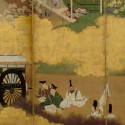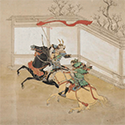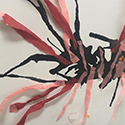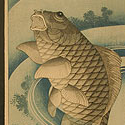|
|
| Show All 17 Results (Text Only) |
|
| Minneapolis Institute of Arts: The Art of Asia |

|
| Minneapolis Institute of Arts
|
The Explore the Collection section of this content-rich site features nearly 3,500 objects from the MIA's collection of Asian art. All images have a Zoom View; most images have descriptions. A Featured Objects section highlights 20 objects from the collection in great detail (through curator interviews), and six Featured Collections showcase objects in the following categories: 1) Ancient Chinese Bronzes; 2) Architectural Models; 3) Chinese Furniture; 4) Imperial Silks; 5) Taoist Art; and 6) Ukiyo-e. Users can also browse objects by country/region or by one of 15 subject categories (architecture, paintings, ceramics, drawings, etc.) or use the keyword search. An Add to My Collection feature allows users to create an online gallery to save and to share.
Go to Museum Resource: http://archive.artsmia.org/art-of-asia/explore/index.html | |
|
|
|
| Arts of the Samurai [PDF] |
|
| Asian Art Museum of San Francisco
|
"The term samurai is derived from the word saburau, or “one who serves.” The evolution of the samurai from mounted guards to the nobility (during the twelfth century) and their subsequent ascent to military leaders of Japan (until imperial restoration during the nineteenth century) is chronicled in distinctive warrior arts and literary tradition. This packet examines the samurai through precious art objects from the museum’s collection. These include authentic military equipment (arms and armor), paintings depicting famed conflicts, ceremonial attire, and objects created for religious and cultural pursuits strongly connected with the samurai class."
Go to Museum Resource: https://education.asianart.org/wp-content/uploads/sites/6/2019/12/ArtsofSamurai... | |
|
|
| The Asian Art Digital Teaching Project: Japan |
|
| Columbia University, Media Center for Art History
|
A module for "classroom presentation or student study" of two important scrolls from the Kamakura Period – Illustrated Legends of the Kitano Shrine (Kitano Tenjin Engi) and Illustrated Sutra of the Miracles of Kannon.
Go to Museum Resource: http://www.learn.columbia.edu/nehasian/html/neh_geo_con_japan.html | |
|
|
| Create Your Own Illustrated Haiku |
|
| Asian Art Museum of San Francisco
|
Haiku is a form of Japanese poetry made of three lines (5 syllables, 7 syllables, 5 syllables) that is commonly a meditation on nature. Make an image using colorful paper and ink, and then write a haiku inspired by your creation. Downloads include visual instructions and an activity.
Go to Museum Resource: https://education.asianart.org/resources/create-your-own-illustrated-haiku/ | |
|
|
| Creating a Japanese Screen |
|
| Asia Society
|
Lesson plan that introduces the idea that art is made to enhance our surroundings and also that the choices made about them reflect something about the person choosing. Uses two Japanese folding screens -- one from the Edo and the other from the Muromachi period -- as primary sources.
Go to Museum Resource: http://sites.asiasociety.org/education/AsianArt/lessons.japanese.htm | |
|
|
| Explore a Japanese Handscroll: The Art of Hon'ami Kōetsu (Edo Period, early 1600s) |
|
| Princeton University Art Museum
|
An excellent interactive website for exploring an Edo period handscroll by Hon'ami Kōetsu (1558-1637). "In this handscroll Kōetsu transcribed ten verses from the poetry anthology Shinkokin wakashū on sheets of colored paper that are decorated on the front and back with woodblock-printed mica designs." After exploring the scroll the user can write his/her own poem (by selecting from a set of phrases) and then see this poem "written" on his/her own handscroll in the style of Kōetsu.
Go to Museum Resource: https://artmuseum.princeton.edu/asian-art/japan/viewers/poem-scroll-viewer/ | |
|
|
| Gyotaku |
|
| Allen Memorial Art Museum, Oberlin College
|
"Gyotaku (guh-yo-tah-koo) is the Japanese art of fish painting. It was developed more than a century ago as a fisherman's method of recording the size and species of his catch, and is now accepted as an art form worldwide. Students will study the history of fish printing and make their own prints." For grades 1 & 2.
Go to Museum Resource: http://www.oberlin.edu/amam/asia/gyotaku/Default.html | |
|
|
|
| Show All 17 Results (Text Only) |









